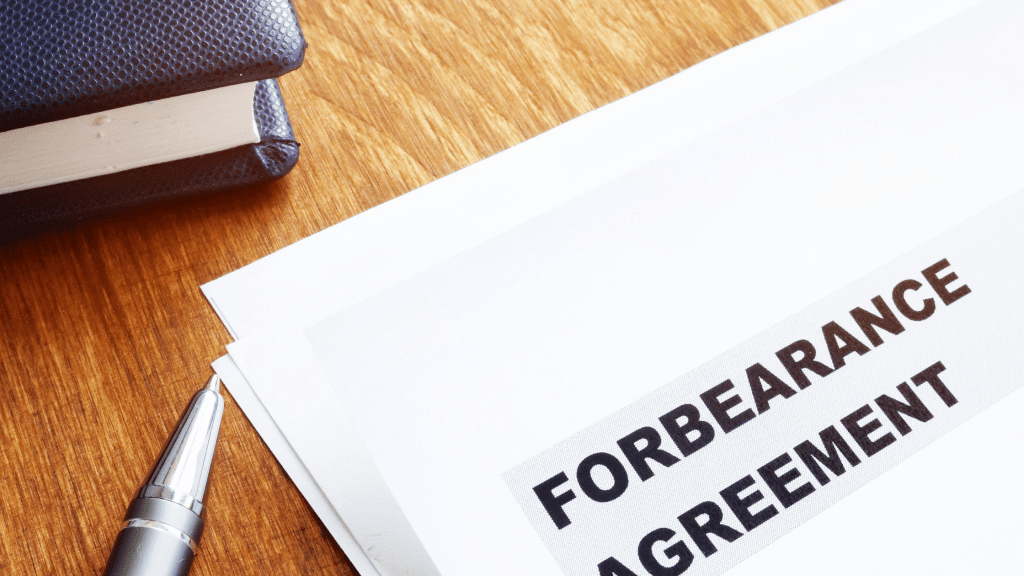With over millions of Americans in the U.S. who have been infected by COVID-19, and thousands who have lost their lives; small businesses and individual households have been sent into a financial tailspin.
A look at the Department of Labor data reveals that unemployment rates are the highest they’ve been since 1934 during the Great Depression.
If you’re among those losing your job or income to COVID-19, you should apply for immediate relief under the CARES Act. I have received dozens of messages about mortgage forbearance under the CARES Act, so I feel obligated to answer these questions.
Let’s get started!
What is mortgage forbearance under the CARES Act?
The CARES Act allows an individual to request mortgage forbearance for up to 180 days, along with an additional 180 days extension, if he or she is facing difficulties in making payments. The only requirement to qualify for this relief is to have a financial hardship related to the ongoing pandemic. The assistance is available for federally-backed mortgages only.
For those, who are unaware of mortgage forbearance, it is a period of relaxation (or temporary relief) under which your lender will pause your mortgage payments or accept a partial payment until you are financially stable to resume the payments.
What is the difference between a mortgage forbearance and a loan modification?
Mortgage forbearance is best defined as a temporary relief measure that offers some relaxations in making payments. A loan modification, on the other hand, involves structural changes in your mortgage, which might include lower payments, change in the loan term, and even a repayment plan that suits your financial circumstances.
Mortgage forbearance under the CARES Act offers temporary relief instead of any permanent restructuring of your mortgage.
What are the repayment terms under mortgage forbearance?
The repayment terms under a mortgage forbearance program may vary among lenders. Here is a list of repayment terms offered under different federal loan programs.
FHA Loans
- If you have an FHA loan, you can repay the due amount within six months of the end of the forbearance period.
- Also, you can extend the term of your mortgage to 30 years by adding the due amount in your monthly payments.
- You can make a lump sum payment of the due amount.
Fannie Mae & Freddie Mac
- You can repay the due amount within 12 months of the end of the forbearance period.
- You can extend your payment term by the same number of months as that of your forbearance period.
- You can add the due amount in your loan balance and adjust loan payments for as many months as you will need to bring your monthly payments to the same level as before the forbearance.
- You can add the due amount into your loan balance and extend the terms of your loan to 40 years.
VA Loans
- You can enter a repayment plan to pay the due amount within six months of the end of the forbearance period.
- You can add the due amount to your loan balance and extend your loan term to 30 years.
- You can pay up to 31% of your gross income towards mortgage payment and extend your loan term to 30 years. There is also an option to forbear the principal amount.
USDA Loans
- You can enter a repayment plan and pay your past dues within six months of the end of the forbearance period.
- You can make a lump sum payment at the time of your loan payoff.
- You can add the due amount in your monthly payments and extend your loan term to 30 years. You can continue making higher payments until your payments reach the same amount as before the forbearance period.
Which option makes more sense?
You get a lot of flexibility in making loan payments, but let me explain the benefits and shortcomings of these methods.
- Pay due amount within 12 or 6 months: This is a good option for those having a job or having a high chance of landing a job immediately. You can resume your regular payments within 12 months. The only catch here is that your personal finances might be a bit shaken after the pandemic.
- Add the due amount in your monthly payment: This is probably the best option given the least amount of financial pressure it will add on you. However, you may have to continue making payments longer than you’d have to without this add-on amount. It may extend to your early retirement years.
- Make higher payments until the payments resume pre-pandemic period: Among all the options, this one will require you to make additional payments only until the due amount is paid. You can resume regular payments afterward with little to no impact on your long-term financial goals.
3 Things to consider when asking for mortgage forbearance

Find out whether you qualify for a forbearance.
The first step is to find out whether you qualify for relief or not. Here is what you should do.
- Find out if your mortgage is federally-backed. If yes, you can apply for forbearance.
- Call your mortgage servicer and find out about any specific requirements. You should ask about income requirements, proof of hardships, etc.
- Ask your lender if there is any set timeframe for applications. Make sure to apply before any deadlines.
If that doesn’t cover all of your doubts, or if you want more clarifications, join my Facebook group (link) today or visit my website (TheWorkingHomeschooler.com). I’ll answer your questions.
Ask about the repayment option first.
Before applying for mortgage forbearance, find out more about the payment options. The CARES Act doesn’t define the rules for repayment, so individual lenders are offering different options for payments.
You should ask your servicers about the specific options. If your servicer offers a custom payment plan, get it in writing and keep it in your records.
The exact process to apply for mortgage forbearance.
You can ask your lender about the application process. Let me list down the steps.
- Visit your lender’s website and find the application for mortgage forbearance. Some lenders may provide a helpline number, so contact them.
- Furnish required proofs to indicate financial hardship. You may have to provide income statements and a rough estimate of your expenses, so prepare in advance.
- Ideally, your lender will get back to you with the available repayment options or terms. If the terms suit you, ask for a written copy and avail the benefit.
Does mortgage forbearance affect your credit score?
The CARES Act has announced special credit reporting guidelines for lenders throughout the ongoing crisis. Here is how lenders will report your credit during the COVID-19 crisis.
- If you avail one of the mortgage relief options and your mortgage is current, the lender will have to report your mortgage status as current to the credit agencies. There will be no impact of a partial payment or moratorium or mortgage forbearance on your credit.
- If you were already delinquent on your mortgage before the relief, the lender would continue reporting your account as delinquent through the forbearance period.
- If your mortgage was in a default mode, but you made it current through payments before availing mortgage forbearance, the lender will have to report your mortgage as current only.
If you’re still worried about your credit score or want to improve it, check out my credit repair kit. I am offering a limited period offer to buy the entire package for $1. Here is what you’ll find in the kit:
- DIY Master Credit Repair Guide
- Over 100 dispute letter templates
- Over 4hrs of Video Training.
If you have any more questions, put them in the comments section below :).









